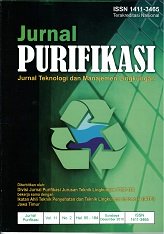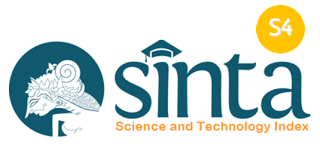INTENSIFIKASI PROSES OZONASI FENOL MENGGUNAKAN KAVITASI HIDRODINAMIKA DAN KAVITASI ULTRASONIK
Main Article Content
Abstract
Phenolic compounds are one of the main and hazardous contaminants in the waste water due to its toxicity, even at low concentration. Several wastewater treatment processes have been tested for reducing phenol concentration. One of the treatment processes is ozonation. However, this process has several problems, namely the small solubility of ozone in water and the low reactivity between ozone and phenol. This problem can be solved by cavitation, a phenomenon of formation, growth, and collapse of microbubbles within a liquid. This research studied the performance of ozonation and cavitation (hydrodynamic and/or ultrasound) for phenol degradation. The combined ozonation/hydrodynamic cavitation/ultrasound cavitation process showed the highest efficiency in phenol degradation, and the lowest residual and off gas ozone concentrations. The phenol removal efficiencies in ozonation/hydrodynamic cavitation/sonication, ozonation/sonication, ozonation/hydrodynamic cavitation and ozonation processes were 56.27%, 46.46%, 26.28%, and 18.63% respectively.
Downloads
Article Details
Submission of a manuscript to Jurnal Purifikasi means that the work has never been published in another journal and is not under consideration for publication elsewhere. The author hereby agrees to submit the copyright of the manuscript and its contents to Jurnal Purifikasi, if accepted for publication. Accepted manuscripts will be published in printed form where the ISSN is bound in printed form, not in online form (pdf). Authors are not allowed to publish their work in other forms (journals) without permission from the Jurnal Purifikasi manager.
By submitting a manuscript, the author is deemed to know all the rights and obligations attached to each manuscript.








